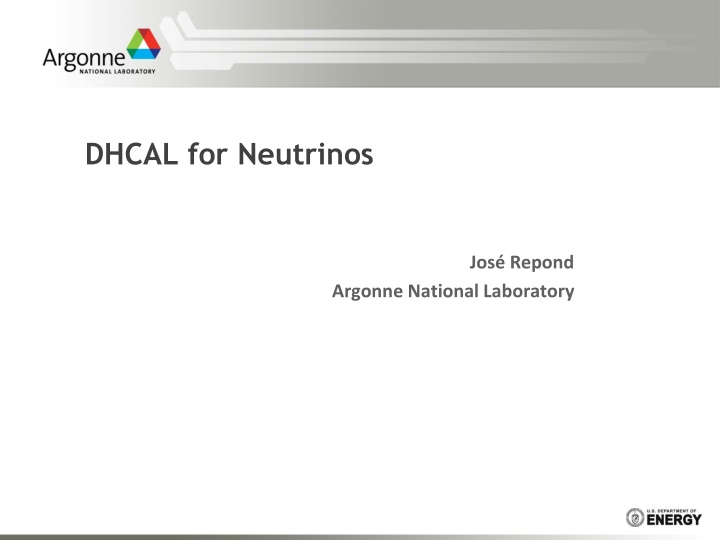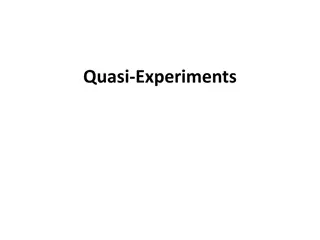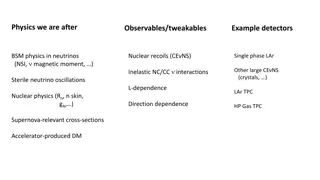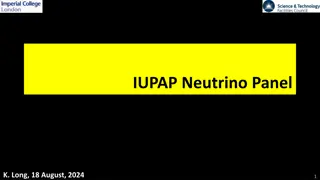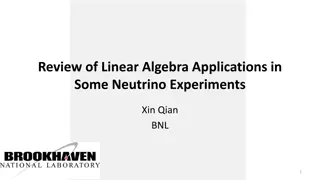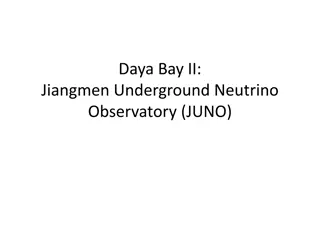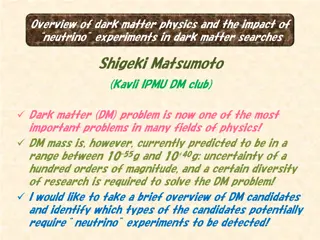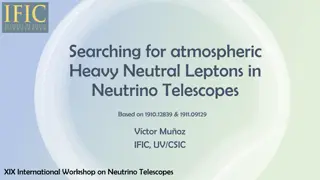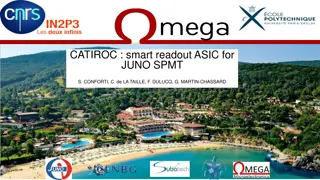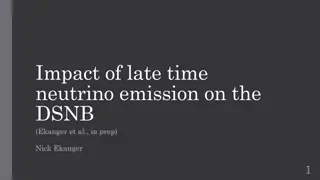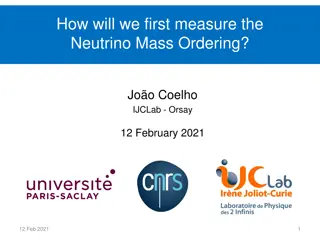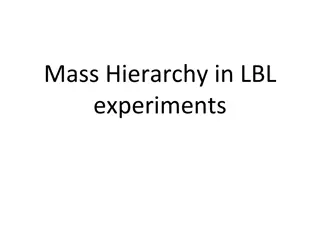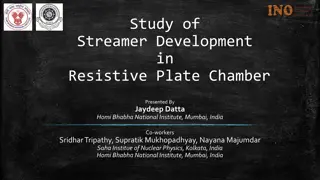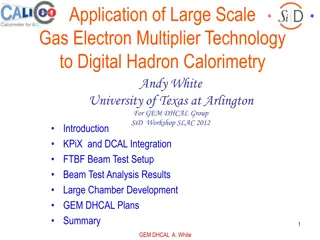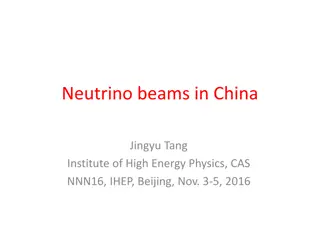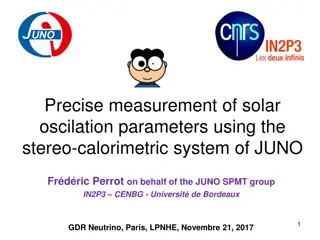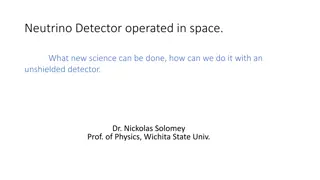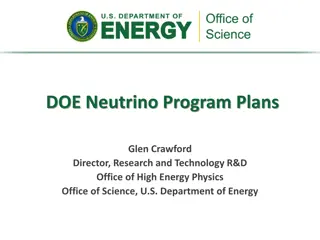Challenges and Opportunities in DHCAL Technology for Neutrino Experiments
Funding cuts have impacted DHCAL activities for neutrino research, leading to limited progress. However, there is interest in utilizing existing technology for neutron yield measurements and muon energy evaluations. Efforts include addressing neutron interactions, optimizing materials, and revamping DHCAL efficiency and structure.
Download Presentation

Please find below an Image/Link to download the presentation.
The content on the website is provided AS IS for your information and personal use only. It may not be sold, licensed, or shared on other websites without obtaining consent from the author.If you encounter any issues during the download, it is possible that the publisher has removed the file from their server.
You are allowed to download the files provided on this website for personal or commercial use, subject to the condition that they are used lawfully. All files are the property of their respective owners.
The content on the website is provided AS IS for your information and personal use only. It may not be sold, licensed, or shared on other websites without obtaining consent from the author.
E N D
Presentation Transcript
DHCAL for Neutrinos Jos Repond Argonne National Laboratory
Situation Funding for any DHCAL activities has been abruptly terminated by the beginning of FY2015 (October 2014) The DOE and Argonne management have since limited all activities, such as further developments, participation at meetings etc. In February the DOE requested a White Paper on future use of the DHCAL technology Three experiments have expressed interest in using the existing DHCAL layers or the technology In addition, we have made some progress with the development of fast RPCs 2
Measurement of the neutron yield of neutrino interactions in Gadolinium-doped Water understanding neutrino-nucleus interactions addressing limiting factor in proton decay searches (neutrino induced backgrounds) Number of neutrons depends on a) Type of interaction b) Momentum transfer The DHCAL will be used to measure the direction and energy of outgoing muons Deployment later this year? 3
Measurements to be done with ANNIE Produced neutron(s) Measured with Large Area Picosecond Photo Detectors (LAPPDs) and conventional phototubes Outgoing muon a) Measured with Scintillator-based Muon Range detector crude angular resolution large solid angle b) Measured with DHCAL layers + additional absorber plates much improved angular resolution limited angular acceptance can be moved to cover different solid angles 5
Depth of DHCAL Energy of muons estimated through their range in the DHCAL Maximum energy about 1.6 GeV I Material Thickness Density [g/cm3] Thickness [g/cm2] X0 Copper 2 mm 8.960 1.792 0.14 0.013 Steel 2 mm 7.874 1.574 0.11 0.012 Glass 2 mm 2.230 0.446 0.07 0.005 Teflon 3 mm 2.20 0.440 0.09 0.007 Total 4.252 0.41 0.037 DHCAL Total Thickness = 4.252*50 layers=212.6 g/cm2 Range/M = 212.6 [g/cm2/GeV] M is the mass of the particle 213 [g/cm2] stops ~0.5 GeV/c muons From PDG 1.6 GeV muon stops in ~950 [g/cm2] Need additional 50 layers of 2 cm steel to absorb 1.6 GeV muons (cost ~ $25k) 6
Revamp and prepare the DHCAL A) Study loss of efficiency problem Cross-correlate efficiency measurement with physical layer Measure surface resistivity Propose solution B) Prepare solution to board-bending problem Design some matting to insert into the cassettes Test if readout boards can be made to be flat again C) Disassemble all 50+ layers and reassemble with proper solutions D) Design and build new absorber structure 7
Short Baseline Neutrino Detector - SBND Planned neutrino detector On Fermilab site 110 m from Fermilab Booster Part of an ensemble of neutrino detectors at different baselines Main detector Liquid Argon Time-projection Chamber Physics motivation Search for CP violation in the lepton sector Understanding of experimental anomalies at short-baselines (e.g. LSND effect) Search for oscillations to sterile neutrinos 8
The Detector Concept Cathode Plane Assembly Anode Plane Assembly Liquid Argon 9
Muon Spectrometer Role Identify cosmic ray tracks Traditional cosmic ray rejection If track present, veto DAQ for a certain amount of time Improved muon spectrometer Track muons and exclude only area in vicinity of track DHCAL technology RPCs with 1 x 1 cm2 pad readout Attractive solution for tracking muons in 3D 50 Layers available corresponding to ~15 m2 (Assuming 3 layers deep) SBND expressed interest Time scale First data taking in 2018? 10
Measurement Neutrinos from reactor Goal Establish neutrino mass hierarchy Measure neutrino mixing angles + observe supernova neutrinos + study atmospheric, solar and geo neutrinos Time scale Construction to start in 2014 To be completed in 2019 11
Muon Tracking Tracking muon versus veto Reduced dead time Area 1,600 m2 DHCAL technology Ideally suited Need to build factor of 3x32 more (assuming 3 layers) Only cover central region? JUNO expressed interest 13
Conclusions After the DHCAL program was terminated Being asked to explore possibilities to re-utilize technology Several projects show interest ANNIE SBND JUNO 14
Addendum: High-rate RPCs Semi-conductive glass plates Several 20 x 20 cm2 plates in hand Bulk resistivity measured to be Rbulk ~6.3 1010 cm (in comparison, float glass, as used for the DHCAL, has Rbulk ~ 4 1013 cm) Fast RPCs 2 chambers almost completely assembled Fermilab tests Planned for early May, 2015 15
